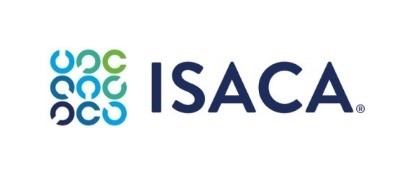Motorola Launches the moto g67 POWER The Best Camera Phone with 7000mAh Battery Under INR 15K, featuring a Segment Best 50MP Sony LYTIA 600 Camera with 4K Recording on All Cameras, and Snapdragon 7s Gen 2 at Just INR 14,999
Mumbai, 05th November 2025: Motorola, a global leader in mobile technology and India’s leading AI smartphone brand, today announced the launch of their best camera phone under 15K segment with a massive 7000mAh Battery moto g67 POWER. The device redefines its segment with the segment’s best# 50MP Sony LYTIA™ 600 camera with segment only 4K video recording from all cameras, a massive 7000mAh battery with Silicon Carbon Technology for slimmer design, powerful Snapdragon® 7s Gen 2 processor, segment’s highest durability with Gorilla Glass 7i and MIL-810H, and a brilliant 6.7” 120Hz FHD+ Display, all wrapped in an ultra-premium Pantone™ curated vegan leather design.
The moto g67 POWER introduces a segment best# 50MP Sony LYTIA™ 600 sensor, delivering stunning clarity, rich detail, and exceptional low-light performance. It is the only phone in its segment to offer 4K video recording from all cameras, including the 8MP Ultrawide lens and a segment’s highest 32MP selfie camera with Quad Pixel technology and Photo Booth mode. It features an impressive 2-in-1 ambient sensor intelligently enhances colour, clarity, and lighting in real time, ensuring social ready shots in every condition. With All-Pixel Focus and 32x more focusing pixels, users get faster and more accurate focusing even on challenging light. Powered by moto ai, the camera introduces intelligent features like AI Photo Enhancement Engine, Auto Night Vision, AI-Powered Portraits, Auto Smile Capture, and Hi-Res Zoom. Users can further enhance their creativity with Google Photos AI tools such as Magic Eraser, Photo Unblur, and Magic Editor, bringing advanced generative AI photography tools right to the phone.
The moto g67 POWER features a segment-leading 7000mAh battery powered by advanced Silicon Carbon Technology, delivering a slimmer design, longer battery life, and improved battery health over traditional lithium-ion batteries. Offering up to 58 hours of runtime on a single charge that’s more than two days of uninterrupted power — it also includes Battery Care 2.0, which intelligently optimizes charging patterns to protect long-term performance. In real-world usage, this translates to up to 130 hours of music playback, 33 hours of video streaming, 28 hours of web browsing, 26 hours of gaming, and 49 hours of talk time, making it the ultimate endurance smartphone in its segment.
Powered by the cutting-edge 4nm Snapdragon® 7s Gen 2 platform, the moto g67 POWER delivers blazing-fast performance, ultra-smooth multitasking, and lag-free gaming. With in-built 8GB RAM, expandable up to 16GB with RAM Boost for a total of 24GB, and 128GB of UFS 2.2 storage, every app launches instantly, and every task runs effortlessly. With support for highest in segment 11 5G bands, VoNR connectivity, and Wi-Fi 6, the moto g67 POWER delivers super-fast connectivity and low latency, keeping users ahead in today’s hyper-connected world.
The moto g67 POWER is built for real-world challenges with ultimate durability. Featuring segment’s highest Corning® Gorilla® Glass 7i for 2x better drop and scratch protection and passing 13 MIL-STD-810H military-grade tests, it withstands shocks, drops up to 1.5m, extreme temperatures, high humidity, and fluid exposure. Combined with IP64-rated water and dust protection, it’s one of the toughest smartphones in its class.
The moto g67 POWER features a segment leading 6.7” FHD+ display with a 120Hz refresh rate with advanced Display Colour Boost technology, and High Brightness Mode of up to 1050 nits, ensuring vibrant visuals and excellent outdoor visibility. Protected by Corning® Gorilla® Glass 7i, the display also includes Water Touch Technology for smooth touch response with wet hands, and SGS Eye Protection to reduce eye strain during long viewing sessions. For immersive entertainment, it comes equipped with dual stereo speakers tuned with Dolby Atmos® and Hi-Res Audio, delivering rich, multidimensional sound for movies, music, and gaming.
Mr. T.M. Narasimhan, Managing Director, Motorola India, said, “With the launch of the moto g67 POWER, we are proud to introduce the segment’s best# camera phone under ₹15,000, featuring a 50MP Sony LYTIA™ 600 camera capable of 4K recording from all lenses. It is complemented by a massive 7000mAh battery with advanced Silicon Carbon Technology, ensuring a slimmer design, longer battery life, and up to 58 hours of usage on a single charge. Powered by the Snapdragon® 7s Gen 2 processor, the device delivers seamless multitasking and smooth performance. This launch reflects Motorola’s commitment to meaningful innovation, providing consumers with a smartphone that combines exceptional photography, long-lasting performance, and everyday reliability.”
The moto g67 POWER combines performance and unique style with an ultra-premium design, introduced for the first time in the moto g series. Available in three Pantone™-curated vegan leather finishes — Pantone™ Cilantro, Pantone™ Parachute, and Pantone™ Blue Curacao — each color offers a modern, refined aesthetic that highlights Motorola’s design leadership and attention to detail.
The moto g67 POWER runs on Hello UX based on Android™ 15. It features Smart Connect 2.0 with Swipe to Share, and Swipe to Stream for seamless multitasking across devices. The phone also includes Moto Secure with ThinkShield®, Family Space, and Moto Unplugged for enhanced privacy, parental controls, and digital wellbeing.


